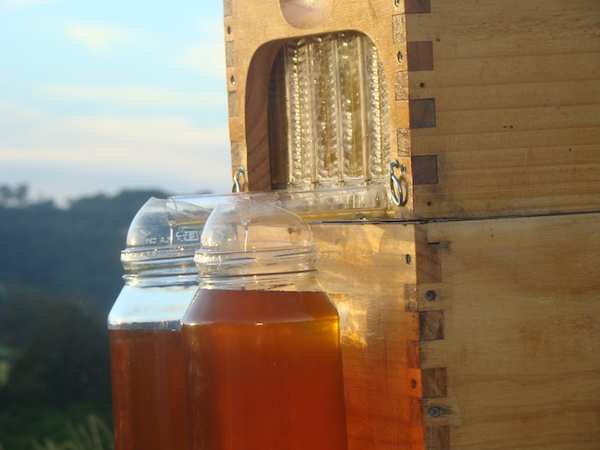"Eric, what do you think of the Flow™ Hive?" I get this question every week, so I thought I'd write out a post to refer people to for more information.
The short answer is this: It is a great solution in search of a problem.

©Beeinventive Pty.Ltd.
People who are not beekeepers see this product and the beautiful videos, and then email me saying:
"I'm going to buy a Flow Hive so I won't have to touch the bees and get stung."
My first rule of beekeeping is: You are going to get stung.
Having a hive where you just turn on the tap and out comes honey isn't realistic, in my opinion.
Bees are the same as other farm animals, you have to take care of them.
For most beekeepers, you harvest honey one day a year. For the other 364, you have to take care of your bees.
Below is a quick rundown on taking care of a beehive through the year.
In spring, you have to first make sure your bees are alive, then feed them sugar syrup and pollen patties until food sources appear in your are. If you want to prevent swarming, you may re-queen the hives now. In late spring you'll add honey supers.

Keep an eye on nectar and pollen sources and see if there is a dearth due to drought or just the plant cycle of your area.
In late summer you might think about harvesting honey. You'll have to think about how much honey to leave a hive for winter. How strong is the hive? If the hive is weak, you may combine it with another hive. You may also re-queen in late summer, early fall.
And you have to deal with the Varroa Mites, or they will kill your hive. Watch our Varroa Mite Treatment video here.
As fall approaches your whole goal is to get the hive in the best shape possible to live through winter, we have a bunch of videos about this here.
These are just some of the tasks of beekeeping, my point here is the Flow Hive is one way to keep bees, but its not a hands-off method of beekeeping, as many people seem to misunderstand.
My favorite beekeeping blogger, Rusty, writes about this better than I do, read her take on the Flow Hive here.

Leave a Reply